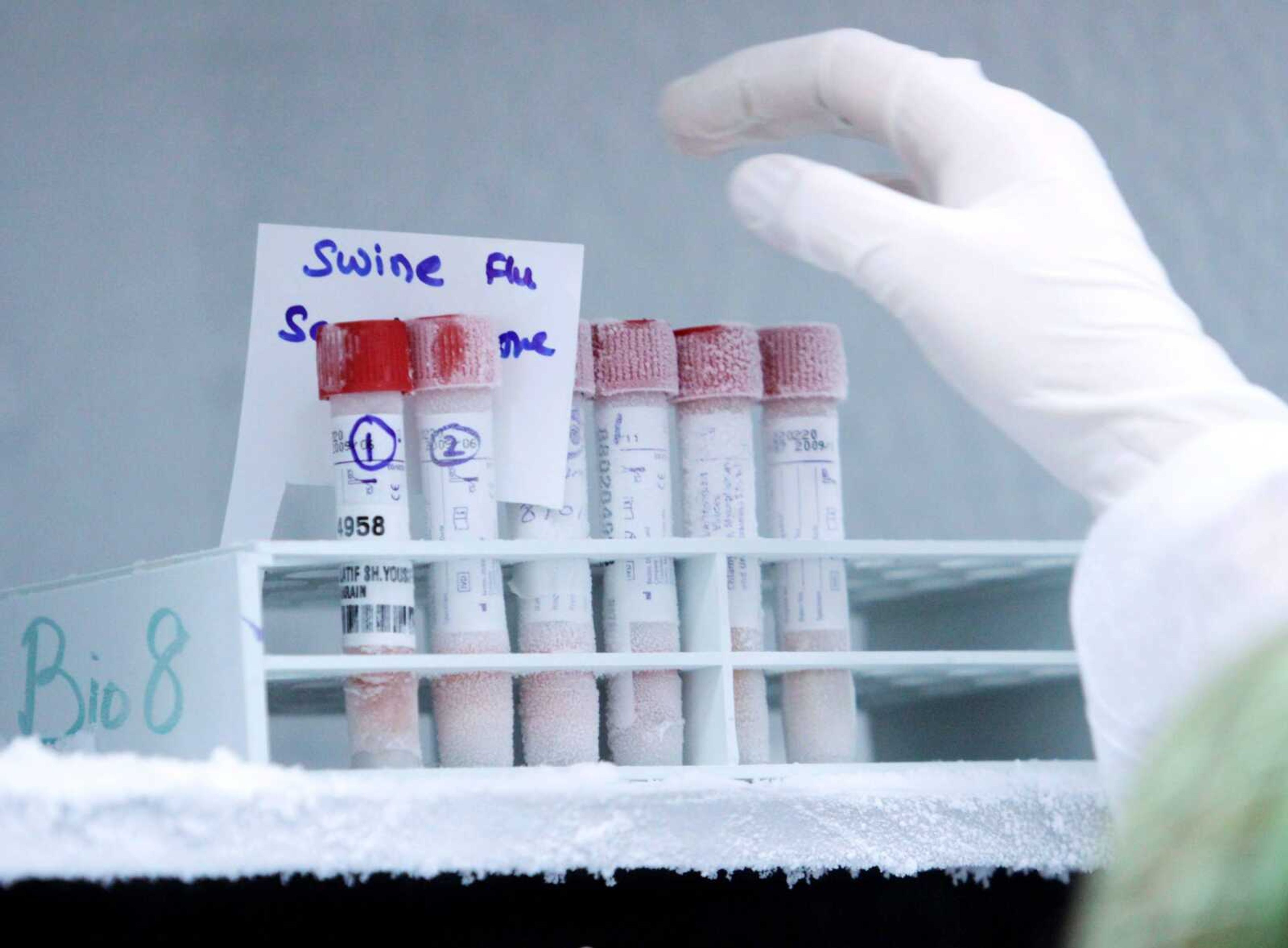Swine flu takes a backseat to other summer ills - but it's still around
Southeast Missouri public health officials are busy tracking summer illnesses, but they haven't forgotten about the new flu -- officially called H1N1 and nicknamed swine flu. Though summer is generally a time when flu cases abate, the close quarters of summer camps have spurred outbreaks...
Southeast Missouri public health officials are busy tracking summer illnesses, but they haven't forgotten about the new flu -- officially called H1N1 and nicknamed swine flu.
Though summer is generally a time when flu cases abate, the close quarters of summer camps have spurred outbreaks.
Camps in Missouri have been part of the trend, according to Missouri Department of Health and Human Services spokesman Kit Wagar. This month, tests confirmed five children at Kanakuk Kamp in Stone County and one child and one adult at Camp Sabra in Lake of the Ozarks had H1N1. Nearly 100 people combined were ill, Wagar said, but tests, which cost more than $600 each, were limited. That could be the reason Missouri has reported fewer than 60 swine flu cases to the CDC. Wagar said a breakout by age was not available; children and teenagers account for 62 percent of the swine flu cases in Illinois.
The CDC is asking anyone with swine flu symptoms to skip camp this year unless they have been symptom-free for 24 hours or more.
Scott County Health Center administrator Barry Cook said Southeast Missouri has been particularly lucky as far as flu figures.
"I don't think there's anybody south of Cape Girardeau [diagnosed with H1N1]," he said.
"We've not had anything out of the ordinary, knock on wood. When everyone's indoors again in the fall, will it make a comeback? That's what we're waiting to see. It's been a crazy year, but everybody's been good about getting the information out."
Cook said the message for flu prevention will remain "the same thing you've heard 1,000 times wash your hands, stay home if you're sick and keep your distance from others."
The only person in Southeast Missouri to be diagnosed with the virus, an unidentified 73-year-old Cape Girardeau man, recovered after being hospitalized, according to Jane Wernsman, assistant director of the Cape Girardeau Public Health Center.
The swine flu appeared late in the regular influenza season and quickly caused comparisons with the worst flu outbreak in recorded history, the 1918 virus nicknamed the Spanish flu. Like the current new flu, the Spanish flu appeared in spring, at the end of the typical flu season. But a second, and much worse, wave of fatalities struck in the fall. Schools closed, the stock market operated on a half-day schedule and the state of Washington made 6-ply face masks mandatory. The Spanish flu killed an estimated 50 million people worldwide.
The World Health Organization declared the swine flu virus a pandemic June 11, indicating significant cases worldwide. On Friday, Illinois reported 2,875 cases and 12 deaths, while Missouri health officials have reported 58 cases and one death. The U.S. Centers for Disease Control, which tracks cases in all 50 states as well as the District of Columbia, Puerto Rico and the U.S. Virgin Islands, reported a total of 27,171 cases and 127 deaths as of Friday.
Debbie Pliemling, director of Stoddard County Public Health Center, said she is looking forward to learning whether the U.S. Centers for Disease Control will provide a separate vaccination against the swine flu or combine it with the seasonal flu vaccine.
"That's going to be a busy time for public health and it's going to take planning on how [to] handle it all. If a vaccine comes out for H1N1, we have to plan how we are going to do the vaccinations," she said.
Beverly Piepenbrok, director of Bollinger County Public Health Center, said summer health issues are "taking a front-row priority right now ... the heat's been terrible, and I reported one probable case of Rocky Mountain spotted fever," she said. "But no West Nile virus and no swine flu."
In Perry County, which also has no swine flu, tick or mosquito-borne diseases to report, workers are busy sending out school immunization reminders.
Until flu season officially begins in the fall, heralded by announcements of shot schedules, public health workers are focused on reminding people to drink plenty of water and stay out of the sun -- or visit a cooling center during summer's hottest days.
Connect with the Southeast Missourian Newsroom:
For corrections to this story or other insights for the editor, click here. To submit a letter to the editor, click here. To learn about the Southeast Missourian’s AI Policy, click here.










